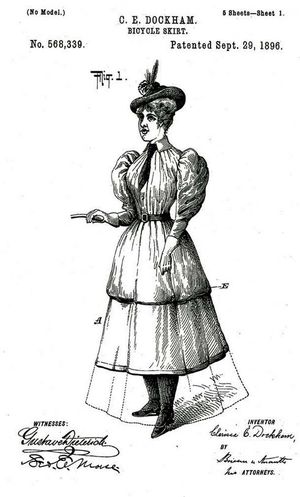How bicycles made America great
Without bikes, America just wouldn't be America.
That sounds strange, since the automobile is considered the vehicle representing our brash, independent nature. Or so we like to believe. But a new exhibit at the Smithsonian Institution's National Museum of American History shows that "the impact of the bicycle on the nation’s industrial, cultural, emotional and even moral landscape has been deep and long lasting," as said by the New York Times.
In the meantime, I'll let the paper that prints all the news that's fit to print - yes, the New York Times, take over.
The end-of-the-century bicycle craze also greased the gears of industrial genius, as manufacturers here and abroad scrambled to devise new ways to speed up and standardize production, to lighten the bicycle frame without compromising its strength, and to make the ride cushier through the addition of a radical new invention, the pneumatic tire.
...
In addition to air-filled rubber tires, we can thank the bicycle for essential technologies like ball bearings, originally devised to reduce friction in the bicycle’s axle and steering column; for wire spokes and wire spinning generally; for differential gears that allow connected wheels to spin at different speeds.
And where would our airplanes, tent poles and lawn furniture be without the metal tubing developed to serve as the bicycle frame? “The hollow steel tube is a great form,” said Jim Papadopoulos, an assistant teaching professor of mechanical and industrial engineering at Northeastern University in Boston. “It’s tremendously structurally efficient, light and strong, and it came into being for the bicycle.”
Bicycles also gave birth to our national highway system, as cyclists outside major cities grew weary of rutted mud paths and began lobbying for the construction of paved roads. The car connection goes further still: Many of the bicycle repair shops that sprang up to service the wheeling masses were later converted to automobile filling stations, and a number of pioneers in the auto industry, including Henry Ford and Charles Duryea, started out as bicycle mechanics. So, too, did the Wright brothers.
...
“I have a deep question about the bicycle,” said Andy Ruina, a professor of mechanical engineering at Cornell University who studies bicycle dynamics. “Was the bicycle invented or discovered? It’s such a pure concept, it seems like it existed in the universe even before people thought of it, like the wheel itself, or a prime number.”
The bicycle certainly is among the purest means of transportation. It’s roughly 50 times more energy-efficient than driving and four times more efficient than walking.
...
Bicycles allowed young men and women to tool around the countryside unsupervised, and relationships between the sexes grew more casual and spontaneous. With a bicycle at her disposal, a young woman could also venture forth in search of work.
Small wonder that Susan B. Anthony said of cycling, “I think it has done more to emancipate women than any one thing in the world.”
Ah, yes, the bicycle is a wonderful thing. Saddle up and go enjoy the weather.

